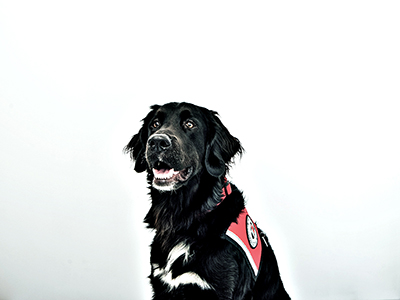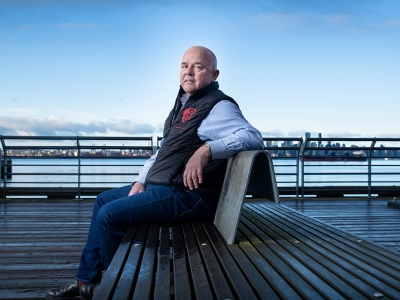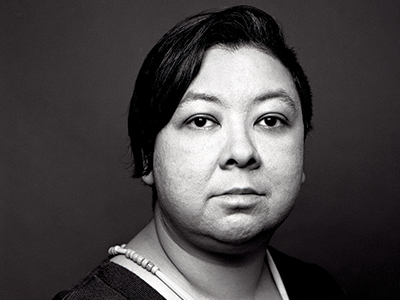By Lisa Gregoire
Photos by Martin Lipman
Ottawa Police Service Constable Vianney Calixte — a community officer who patrols his old stomping grounds, Vanier/Overbrook, in the city’s east end — used to sell insurance for a living. He’s a good talker and people like him, which is why he was a good salesman. It’s also why he’s a good cop.
This past summer, the bilingual, Haitian-born, 15-year veteran of the force received several complaints about a homeless guy living in a tent at a busy Vanier intersection. Nearby residents wanted him gone. Calixte went to visit the man and found out that he was a recovering addict and alcoholic trying to avoid inner-city shelters and the people who might suck him back into that life.
Calixte called a woman he knows who works in housing and homelessness for the city and she talked to the man about relocating to an overflow shelter in the south end. It was too far from downtown and the man politely declined, but he agreed to move away from the problematic intersection. He’s still homeless, according to Calixte, but now he knows where to find help if he changes his mind.
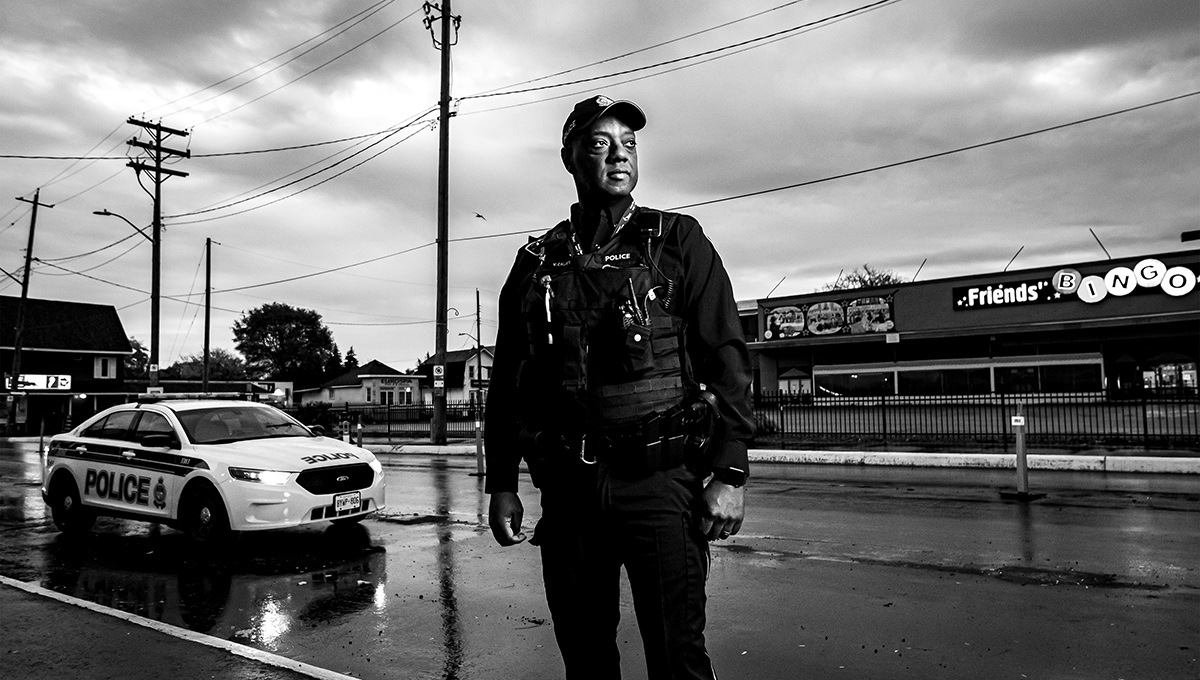
Officer Vianney Calixte
“People don’t take the time to just listen,” says Calixte.
“Nobody chooses to be homeless. Nobody chooses to be an alcoholic or a drug addict. There’s always a story behind it. Listening to that story, sometimes you can move someone in a different direction. I’m not here to solve everyone’s problems, but I can help and support them.”
This is probably not what you expect to hear today when someone mentions policing.
The recent killings of Black citizens by American police, plus Canadian examples of mistreatment and harassment of mentally ill and racialized citizens, have prompted calls to defund police. Accusations of misconduct and racism by the Ottawa Police Service (OPS) have sparked public anger.
“I have unequivocally and repeatedly stated that conscious and unconscious bias is a challenge for all police members,” Chief Peter Sloly wrote in the Ottawa Citizen in response to complaints about racial profiling by an OPS officer this fall, “and that systemic racism exists in policing.”
Given recent controversies, not to mention the global pandemic, one could argue that it’s not a great time for academics to partner with police departments. Or you could say the opposite: in an era of simmering distrust and heightened scrutiny, let’s ask a few important questions — what’s working, what’s not, and why? — in order to grow a new relationship between police officers and the public they serve.
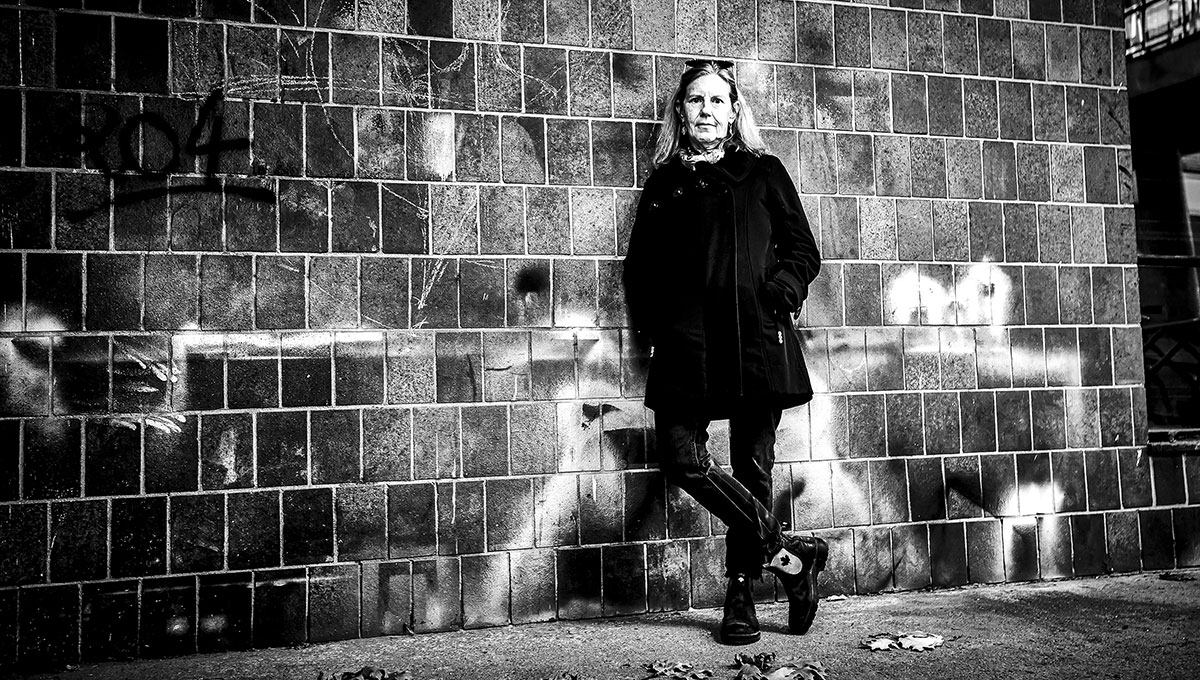
Prof. Linda Duxbury
Linda Duxbury, a management professor at Carleton’s Sprott School of Business, believes the latter. Last year, she and frequent collaborator Craig Bennell from the university’s psychology department launched a three-year project with the OPS to evaluate three neighbourhood policing pilot projects in Vanier/Overbrook, Lowertown/ByWard Market downtown and Bayshore in the west end.
“We have to have a dialogue about what we want from police,” says Duxbury, “and we have to have a debate about roles. I think data helps change the conversation. We need the data, otherwise you’re basing opinions on the loudest voices.”
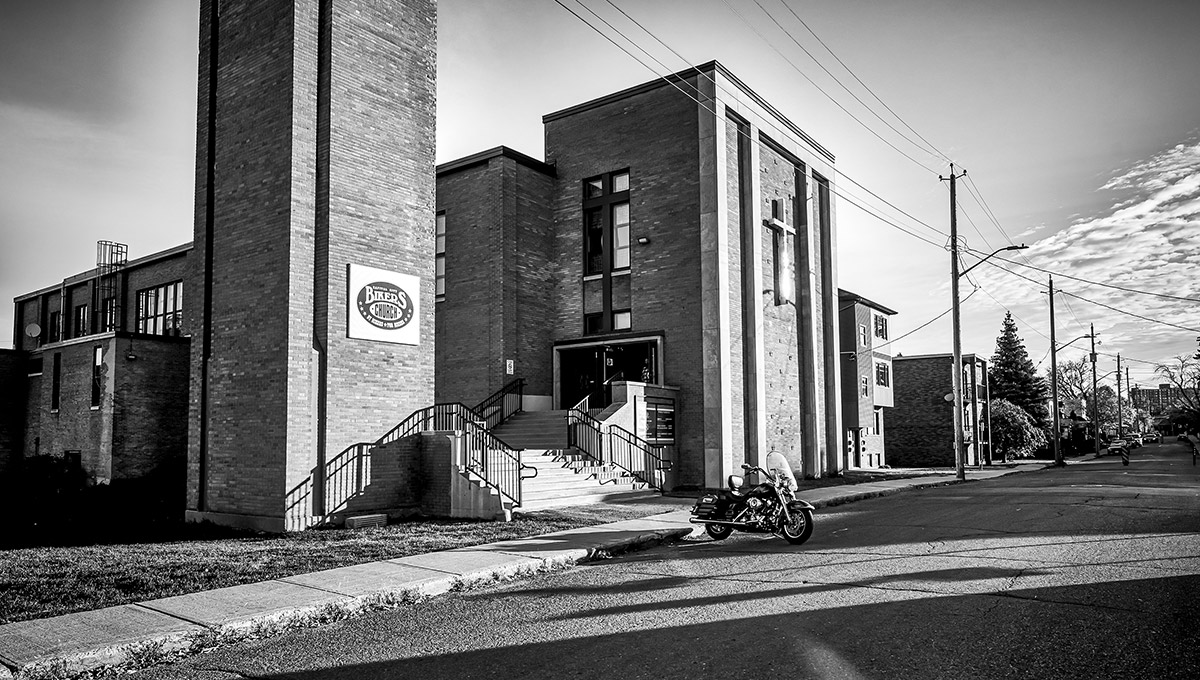
New Neighbourhood Response Teams
In fall 2019, long before the COVID-19 lockdown and the May 2020 death of George Floyd in Minneapolis, the OPS, under acting Chief Steve Bell, quietly heeded calls from residents in high crime areas such as Vanier/Overbrook and assembled neighbourhood response teams (NRTs).
These teams consist of community-specific officers in schools, on the street, in frontline enforcement and in traffic control. The OPS had eliminated community officers in 2017 because, although neighbourhoods liked them, concrete impacts had never been established. This time around, the OPS is gathering facts to help it assess the value of such programs, with help from Duxbury, Bennell and a team of graduate students.
“If you knew how much money is being spent on policing in Canada, why shouldn’t business schools do research that looks at how officers spend their time?” says Duxbury.
“At Sprott, we want to make a difference in the community.”
Duxbury, who has conducted studies on change management, work-life balance and the impact of technology in the public, private and not-for-profit sectors, recently completed an evaluation of the Peel Regional Police’s school resource officer program with Bennell. Impressed with those results, the OPS asked them to conduct an audit of its three NRT pilots.
With $350,000 in funding from Social Sciences and Humanities Research Council of Canada and MITACS, the multi-year study was launched in fall 2019, starting in Vanier/Overbrook. The researchers managed to complete a baseline round of stakeholder interviews, neighbourhood focus groups and an online survey before the pandemic ground our lives to a halt.
But while COVID-19 has forced the team to shift consultations to an online format, it also offers a unique opportunity to examine how the pandemic is impacting police officers, crime and community wellness. Last April, Duxbury launched a separate research project, in collaboration with the Canadian Police Association and also supported by MITACS, to examine the impact of working during the coronavirus crisis on officers and their families.
In simple terms, Duxbury’s community policing group is hoping to define what an ideal relationship would look like between NRT officers and the neighbourhoods they patrol and then offer recommendations on how to achieve that. But there’s nothing simple about the work.
Synthesizing elements such as public expectations, crime prevention, feelings of safety and trust, police interactions, community anecdotes and experiences, court diversion and the quality of communication is tricky. To do that, researchers are measuring the Social Return on Investment, or SROI, a progressive tool for evaluating not just a policy’s cost and statistical outcomes but also its social value: the impacts a policy might have on a community’s health and well-being.
For instance, familiar neighbourhood cops might make people feel safer, but how does that translate into actual benefits for the community? You map out the impacts using SROI indicators over time and then attach dollar figures to the outcomes. “You also talk to people and listen to their stories,” says Duxbury. “An SROI analysis goes beyond numbers to the stories that help illustrate or explain them.”
What is challenging for police, and what people have to understand, is that there’s no one view of what a positive relationship looks like between members of the community and police. “This process doesn’t work,” says Duxbury, “if the community doesn’t work cohesively and with the police to get a common view of what it wants.”
So, what do the people of Vanier/Overbrook want?
Depends on who you ask. Sources say they welcome the reinstatement of community policing, but they’re still unclear about what the officers should be doing and whether they’ll be effective in meeting their diverse needs.
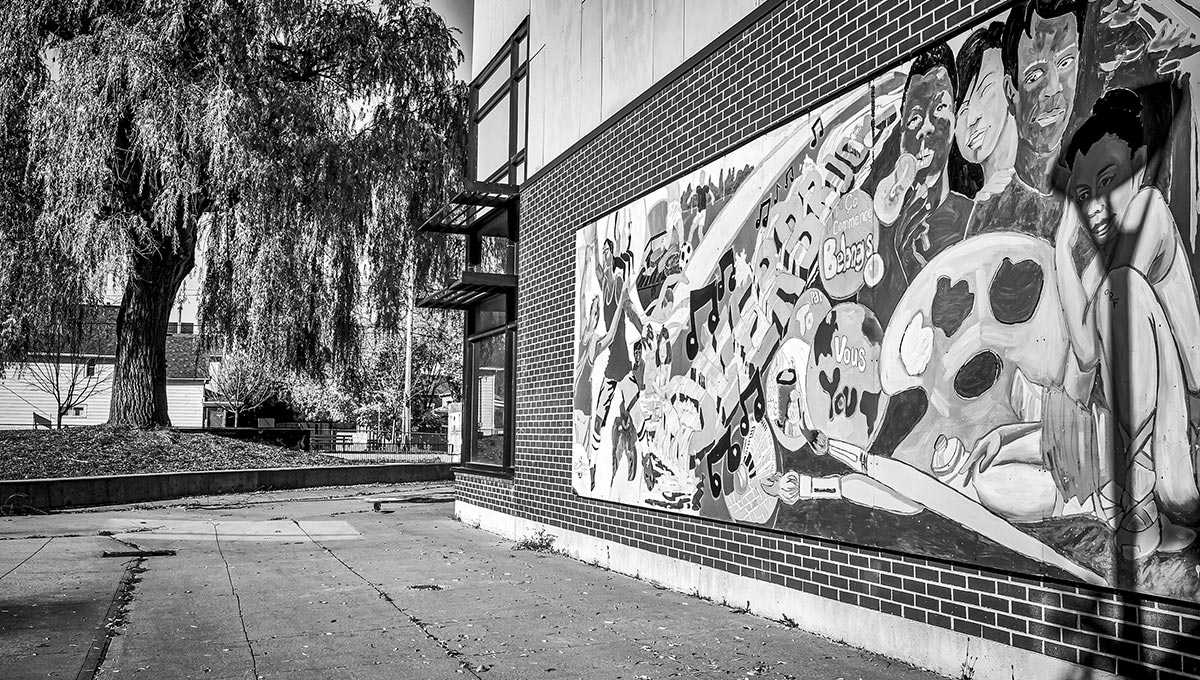
Mutual Respect Key to Bridging Divide
Rob Ireland, operations manager for the Wabano Centre for Aboriginal Health on Montreal Road, has a long history of distrusting police and knows that many Indigenous people, like him, share that unease.
Higher rates of homelessness, poverty, food insecurity and addiction mean Indigenous citizens tend to have more encounters with law enforcement. First Nations, Inuit and Métis people in Canada are like African-Americans in the U.S., he says — historically, they have been singled out by racist cops for harassment, surveillance and discrimination. Or their needs have been ignored.
During our conversation, he forwarded an OPS notice about a missing Indigenous woman. He gets several every month. “It’s happening all the time,” says Ireland. “Do police take it seriously? It’s hard to know. I think they’re starting to. It’s better than it was years ago, but do we need more resources looking for these girls or more resources to find out why those girls are missing?”
Ireland does see hope in the community policing model, though. Building face-to-face relationships based on mutual respect is a promising way to bridge the divide between police and Indigenous people. That, and hiring more people of colour.
“You’ve got to really put a dent into that mindset of white superiority on the force,” he says.
“If you put in 60 per cent coloured people — Indigenous, Black, whatever — you get rid of the white majority, then they would have a better sense of what’s going on.”
Lauren Touchant would probably agree. She is president of the Vanier Community Association (VCA) and helped petition the OPS to bring back community policing. But considering the high numbers of Inuit and First Nations residents living in Vanier/Overbrook, she was surprised not to see an Indigenous member when the local NRT was created. (According to Statistics Canada, four per cent of police officers across the country in 2018 self-identified as Indigenous, a group that comprised five per cent of the national population.)
“This is an issue because we already know the complicated relationship that the Indigenous community has with police, particularly the RCMP,” says Touchant. “Not having an Indigenous officer in a significantly Indigenous area is a problem.”
She also questions the team’s vague roles and priorities and a lack of communication thus far. The VCA would like to see more crime prevention, more data sharing and more co-ordination of efforts toward safety. She acknowledges the pandemic is impacting progress and that the NRT is still new, but she’s anxious for results and is looking forward to working with Sprott scholars to improve the quality of life in Vanier.
“Our hope is to see systemic change,” says Touchant. “This evaluation is great. We’re looking forward to the results and learning from the work that Dr. Duxbury is doing. Now what I want to see are assurances that the police are going to take into consideration the recommendations and apply the proper changes. It will take a lot of courage.”
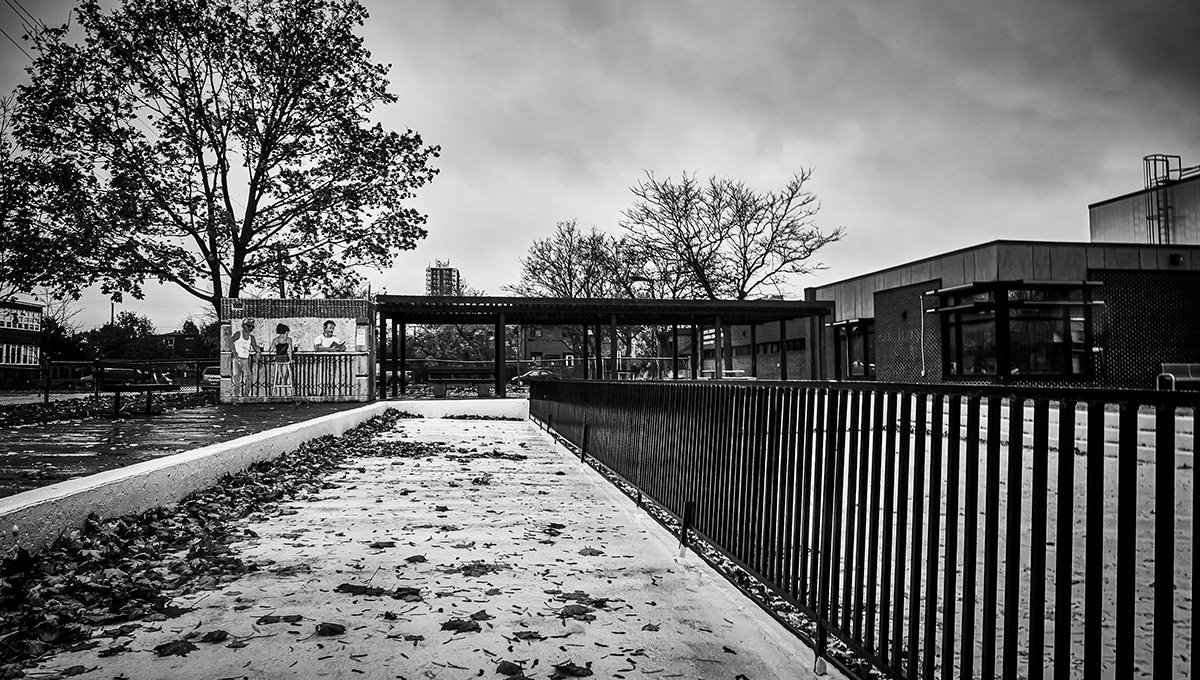
Finding a Way to Be Better
OPS Inspector Ken Bryden is looking for this kind of input. A one-time ByWard Market beat cop and now the officer in charge of the OPS community policing unit, he is a staunch proponent of the neighbourhood policing model and wants to see it succeed this time. “Our organization has the drive, the motivation, the humility and the authenticity to find a way to be better,” says Bryden.
One need only look at how community policing was handled for proof, he says: it was cut, neighbourhoods wanted it back, it was reinstated and now, with help from Carleton, they are conducting a comprehensive review. “It’s a large organization and there are a lot of moving parts — the skills of officers, the expectations, the agendas of certain officers,” he says. “The organization’s culture is very diverse and can be competing at times. Any large organization continually needs to work on its culture, its unified vision.”
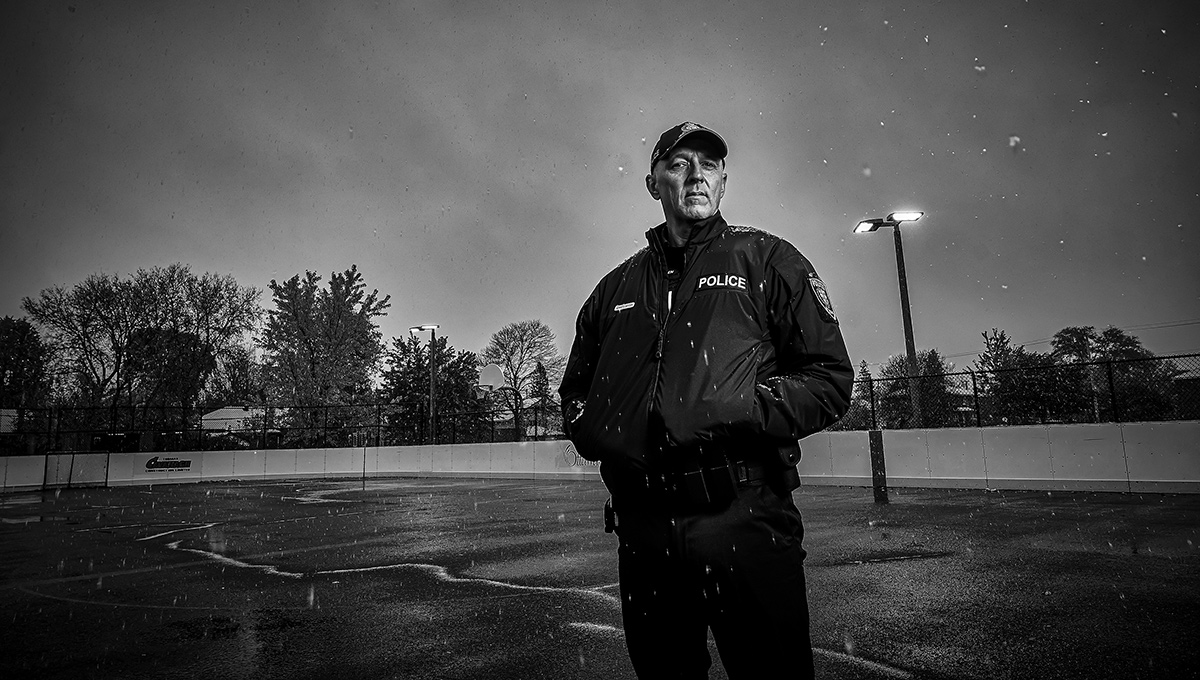
Inspector Ken Bryden
Trust in police ebbs and flows depending on what’s going on in the world, according to Bryden, and right now, public trust is understandably low. Egregious examples of police misconduct, both in the U.S. and Canada, must be addressed, he says, and offending officers must face consequences.
But he also feels that the juggernaut of social media has amplified these examples to such a degree that it’s nearly impossible to have a respectful conversation about facts. Which is why he too welcomes this study from Duxbury and her team — because he wants to find value in what his officers do and he wants them to have an impact on crime and safety. Beat cops, as the front-line public faces of the OPS, have a unique opportunity, he says, to show the human side of policing.
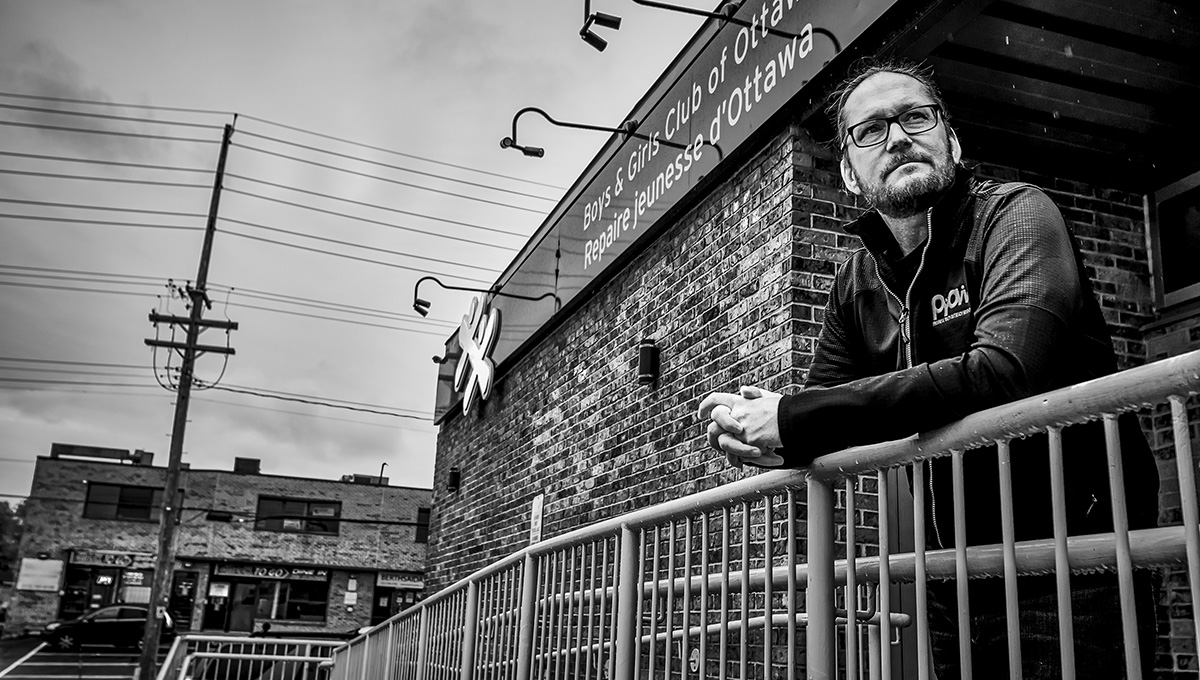
Tom Scholberg
Tom Scholberg doesn’t live in Vanier but as manager of the Boys and Girls Club of Ottawa’s youth diversion program, he’s had clients from the neighbourhood thanks to the police. If an officer arrests a youth for a criminal act, they have the discretion to divert that young offender to Scholberg’s program.
From there, caseworkers refer them to agencies that offer educational, mental health, employment and other services. Most of those diversions come from school resource officers and community police — trusted officers who know the kids and the neighbourhood.
“There are definitely situations where police relationships are sour and it has an impact on individuals, families and community,” says Scholberg.
“But I’ve also seen some great successes where an officer has a real impact on a youth and on their family. So we’re always trying to move that needle, where the negative impact of policing is reduced and mitigated and the potential for positive is increased.”
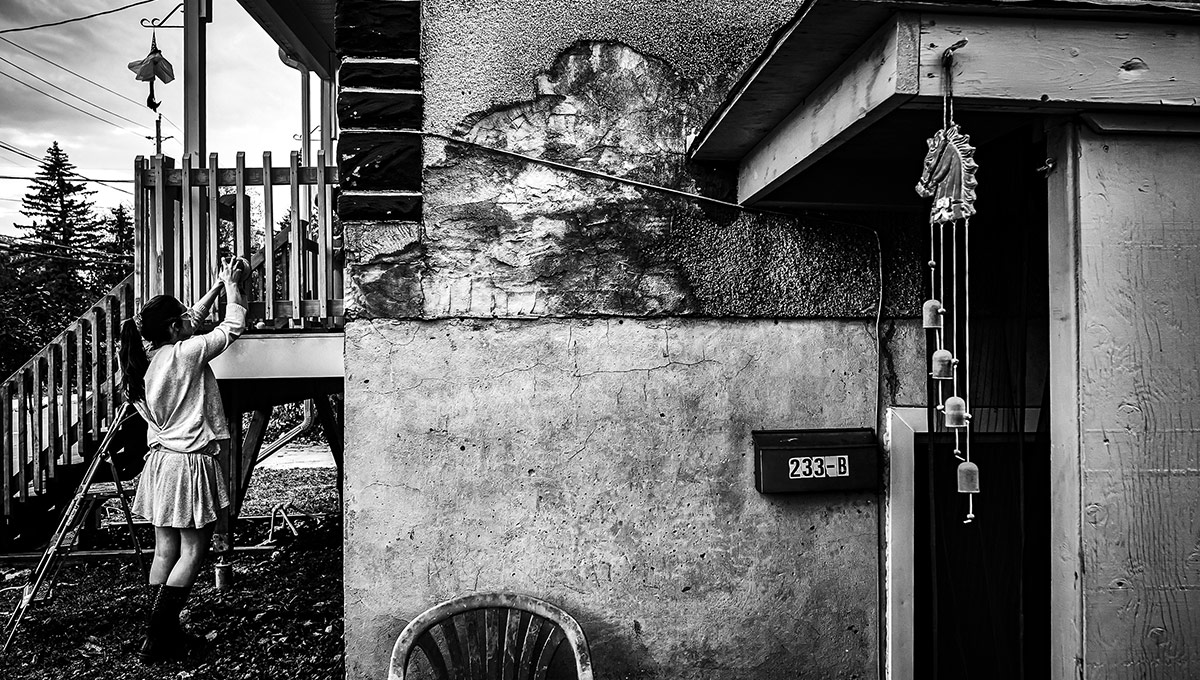
Moving the Needle on Change
Duxbury and Bennell’s study is basically focusing on that needle and what’s pushing it one way or the other. When she hears people say “defund the police,” what she believes they’re trying to say is, “we want a new model of policing.” And greater investment in community policing might be a key component.
Few would disagree that law enforcement is a necessary part of policing. If you’ve been assaulted, robbed, harassed or defrauded, you call police and you expect them to find the perpetrators. But nearly 40 per cent of calls to police now are considered “mental health calls” involving someone in distress. These calls are unpredictable and can take hours — sometimes entire days — to resolve.
So how do you justify beat cops walking the neighbourhood with other more acute demands? You start, says Duxbury, by proving that proactive policing, youth diversion, crime prevention and the unique, intimate knowledge that neighbourhood officers gain on the job can actually make areas safer and potentially save enforcement costs down the road.
But you need facts to make reasoned arguments, and you need engaged research participants. “You have to prove value and they’ve never done it,” says Duxbury.
“Why? It’s really hard. You have to have a partner like the OPS and you have to have partners like the neighbourhood groups who know if they can’t demonstrate that the officers are making a difference, they’ll be yanked again.”
Sean Campeau, a Sprott PhD student working with Duxbury on this project, is interested in policing because crime is a tug of war between perpetrator and victim and police officers are stuck in the middle, trying to balance fairness and equality for both sides using the tools they’re given: laws, weapons, experience and training. And, as Scholberg says, policing is constantly being shaped by social, cultural and technological forces and police agencies must remain malleable in order to maintain legitimacy.
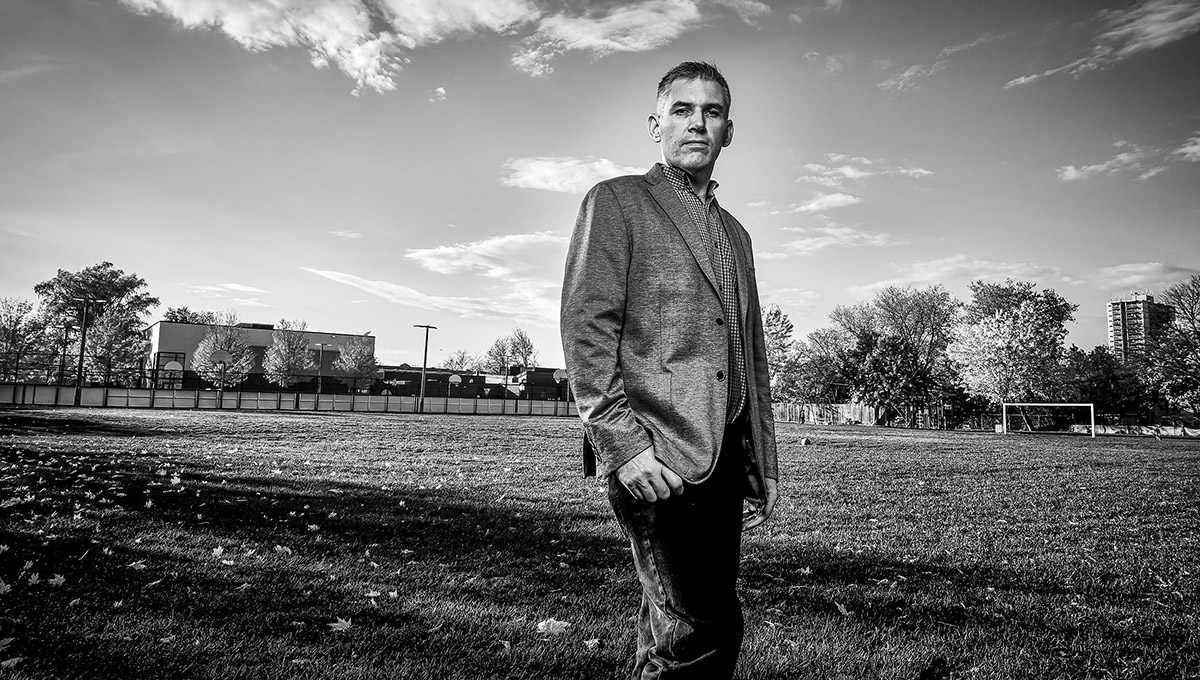
Sean Campeau
Movements such as Defund the Police and Black Lives Matter, for example, are healthy in a democracy, Campeau says, because they destabilize the status quo and, when necessary, move that needle of social change quickly. But any meaningful discussion around the role of police should acknowledge a few things: officers are not all experts in mental health; they are dutybound to enforce laws; and they cannot be all things to all people.
“It’s about expectations,” says Campeau. “People understand that in society police have a responsibility for dealing with crime and ensuring public safety. And then there’s the reality of it. There’s the OPS with officers assigned to their roles, whether patrolling or community policing or criminal investigations, and they have to deal with actual situations every day. There’s that disconnect.
“A big part of our research,” he continues, “is to understand what activities the neighbourhood police officers are engaging in. We want to understand how they relate to the community’s expectations of what police should be doing and how those activities will relate to the outcomes that both the community and the police want to achieve. Getting a better understanding of the process of neighbourhood policing from the community’s perspective is important to the research.”
So far, Campeau has been inspired by the passion and commitment shown by both OPS members and residents in Vanier/Overbrook. The police want to reduce crime and make people feel safer, and they want to build positive relationships with residents. This is particularly impressive in the midst of a pandemic when crime trends are changing — increasing rates of domestic violence, mental health calls, break and-enters — and people are feeling stressed, fearful and isolated.
“Everything that comes out in the media about policing — those issues are real and need to come out — but in the day-to-day, it feels really good to hear all the ideas people have, and how much people care,” says Campeau. “Members of the community and police are working really hard to find answers. They’re all in.”
This fall, Duxbury’s team is doing a second round of surveys and consultations with various Vanier/Overbrook racialized, municipal, business and faith groups, and is continuing preliminary work in the ByWard Market and Bayshore areas. This will all include new questions about how communities are being impacted by COVID-19. In the end, Duxbury is hoping to have a large data set that offers a roadmap on how urban policing can effectively evolve.
“A lot of the things people are asking for are not huge or complicated,” she says. “It’s an issue of mutual respect. And the hope has to be that if the police start responding to this, treating people with respect, the community will meet them halfway.”
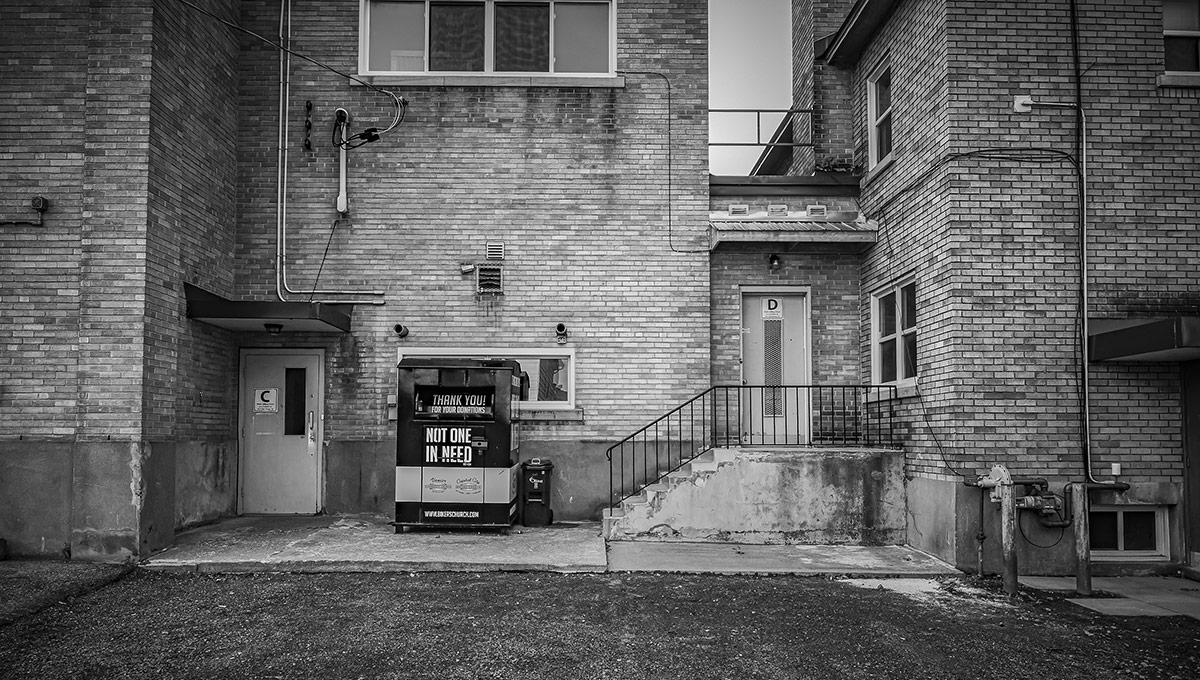
Monday, November 23, 2020 in Features - Fall 2020
Share: Twitter, Facebook
